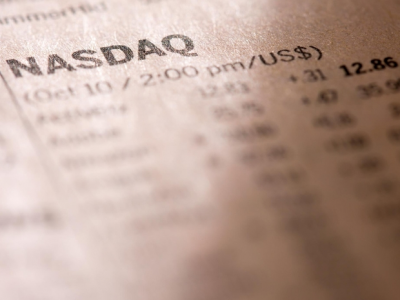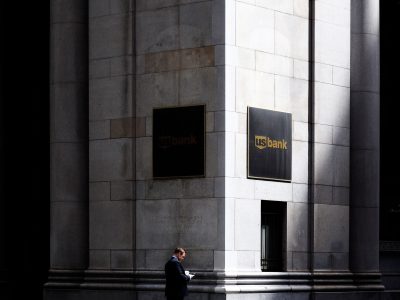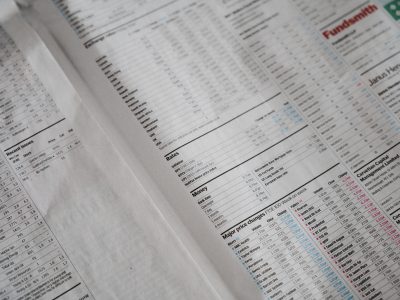The Flag pattern is a significant trend continuation pattern in technical analysis. It offers traders valuable insights into the market’s strength and direction. The pattern’s compact shape and formation during brief consolidation phases give traders a clear signal for continuing trends.
Recognizing and leveraging this pattern can help traders make well-timed entries and exits, maximizing their profit potential in bullish and bearish market conditions.
Definition and Characteristics
What Is the Flag Pattern?
The Flag pattern is a short-term continuation pattern that appears after a strong price movement. It’s characterized by a rectangle formed by parallel trend lines. The pattern resembles a flagpole and flag, where the flagpole represents the sharp price movement and the flag indicates the consolidation.
Bullish vs. Bearish Flag Patterns
Bullish Flag: In a bullish flag, the flagpole forms during a strong upward movement, and the flag drifts down or moves horizontally before the trend resumes upward.Bearish Flag: The bearish flag is the opposite. Here, the flagpole results from a strong downward move, and the flag slopes up or moves sideways before continuing the downward trend.
The Flag vs. The Pennant
While both patterns signal continuation, the Pennant pattern differs in that it forms a small symmetrical triangle instead of a more or less rectangular flag. The meaning is essentially the same, and the names are often interchangeable, but the Pennant’s converging trend lines make it slightly distinct from the almost parallel lines of the Flag pattern.
Market Psychology and the Flag Pattern
The Flag pattern represents a temporary consolidation in a strong trend. It reflects a brief pause where traders gather their bearings before continuing the original trend:
Bullish Flag: The bullish flag’s consolidation phase represents traders taking a breather after a strong upward move. Some traders may lock in profits, while others await the next upward push.Bearish Flag: In the bearish flag, the flag represents a pause after intense selling pressure. Some traders may cover shorts, while others await further selling opportunities.
Understanding this psychology helps traders anticipate the resumption of the trend and plan their trades accordingly.
Learn about the bullish pennant and the bearish pennant patterns. For a long list of key chart patterns you should know – go here.
Steps to Identify the Pattern
Follow these steps to identify the Flag pattern on trading charts:
Identify the Flagpole: Look for a significant price movement, either upward or downward, which forms the flagpole.Recognize the Flag: The flag should be a small rectangular consolidation that forms shortly after the flagpole. It typically has parallel trendlines that slope against the prior trend or move sideways.Confirm the Breakout: The pattern confirms when the price breaks out from the consolidation in the direction of the initial trend.Multiple Timeframes: Confirm the pattern on multiple timeframes to ensure that the trend continuation signal aligns with the broader trend.
By following these steps, you can accurately identify the Flag pattern and make better trading decisions. TrendSpider is a great tool that makes it easier to spot chart patterns.
Trading Strategies Tailored to the Flag Pattern
Strategy for a Bullish Flag
Entry Point: Enter long positions after a confirmed breakout above the upper trendline of the flag. This breakout indicates that the price is resuming its previous uptrend.Stop-Loss Settings: Place stop-loss orders below the flag’s lower trendline to safeguard against sudden reversals. If the breakout is genuine, the price shouldn’t fall back into the flag’s range.Profit Targets: Set profit targets based on the height of the flagpole projected from the breakout point. This measurement often provides a realistic target for capturing the move.
Bearish Flag Trading Strategy
Entry Point: Enter short positions after a confirmed breakout below the lower trendline of the flag. The breakout shows that the price will likely continue its downward trend.Stop-Loss Settings: Set stop-loss orders above the upper trendline of the flag to manage risk. This placement helps protect against potential false breakouts.Profit Targets: Target the projected price range by measuring the height of the flagpole and projecting it downwards from the breakout point.
Other Patterns to Know
In addition to the Flag pattern, consider familiarizing yourself with the following chart patterns:
Head and Shoulders: Indicates a reversal of a bullish trend and a move towards bearish momentum.Learn More.Double Top/Bottom: Signals potential trend reversals after two peaks or troughs. Learn More.Cup and Handle: Suggests bullish continuation, usually following a rounded bottom pattern.Learn More.Ascending/Descending Triangles: These patterns indicate continuation or potential breakout, depending on the breakout direction. Learn More.
Complementary Technical Indicators
Incorporate these technical indicators to validate Flag patterns:
Moving Averages: Use the 50-day and 200-day moving averages to confirm the broader trend’s direction. The Flag pattern within the context of these averages can strengthen the pattern’s reliability.RSI (Relative Strength Index): The RSI can indicate overbought or oversold conditions, enhancing the pattern’s confirmation. For instance, a bullish Flag with an RSI below 30 is likely to result in a strong upward move. Learn about RSI DivergenceVolume Analysis: Rising volume during the breakout validates the pattern and signals strong participation in the move.
Trading Tools to Master the Pattern
TradingView
TradingView provides advanced charting tools that enable traders to identify and analyze Flag patterns effectively. You can customize your charts and set alerts to monitor the market for these patterns.
TrendSpider
TrendSpider offers automated technical analysis, making it easier to screen for Flag patterns across various timeframes and markets. Its automated pattern recognition can significantly enhance your ability to find trading opportunities.
Common Mistakes and How to Avoid Them
Misinterpreting False Breakouts: False breakouts can lead to significant losses. Wait for a strong breakout confirmation, such as a price close beyond the flag’s boundary with high volume.Ignoring Market Context: Ensure the broader market context aligns with the pattern’s signal. A bullish Flag pattern during a broader downtrend might not yield a reliable trade.Overtrading the Pattern: Not all Flag patterns offer the same success rate. Ensure the flag is clear, with parallel trendlines, and occurs within a strong trend.
Practical Examples of Flag Patterns in Action
1. Bullish Flag Leads to a Strong Rally
In a stock market rally, a financial stock exhibited a bullish Flag pattern after a strong upward move. The stock consolidated within a rectangular flag, then broke out upwards, continuing the rally.
2. Bearish Flag Indicates a Downtrend Continuation
A technology company experienced a significant downtrend, then consolidated into a bearish Flag pattern. After the breakdown below the flag, the stock continued its downward trend, leading to further declines.
Master the Flag Pattern for Success
The Flag pattern is a powerful tool for identifying trend continuations, allowing you to capitalize on market momentum. By understanding its structure and psychological implications, and combining it with other technical tools, you can effectively leverage it in your trading strategies. Practice identifying the pattern and refining your approach to navigate market conditions successfully.









Comments